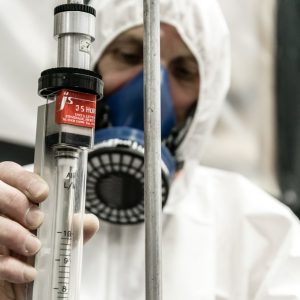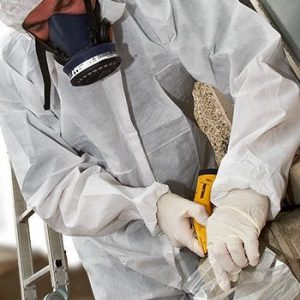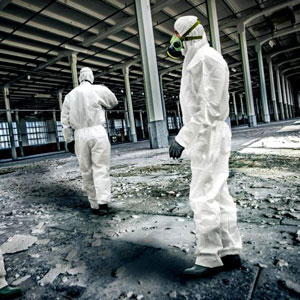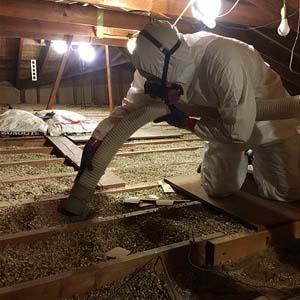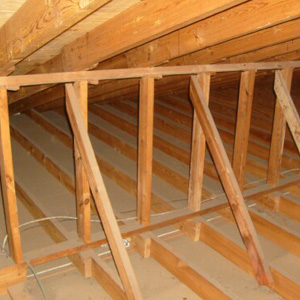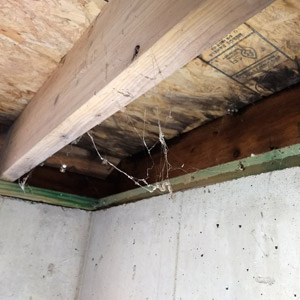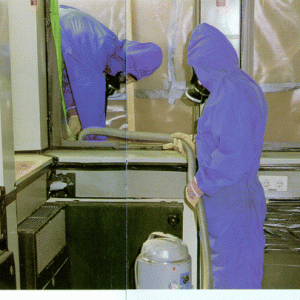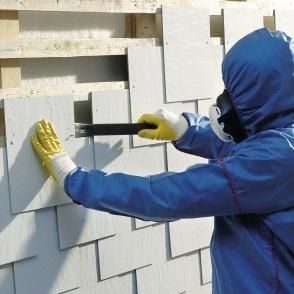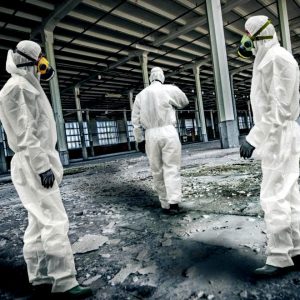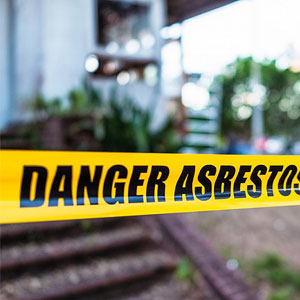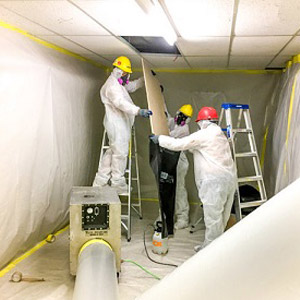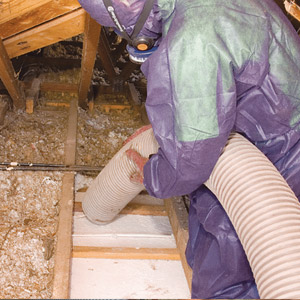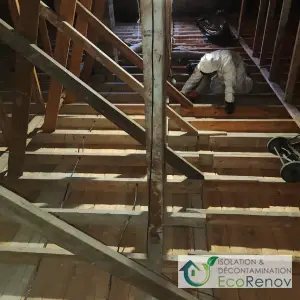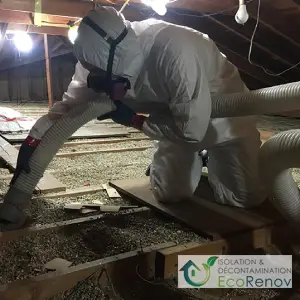Prior to 1985, several materials used in construction in Montreal, Laval & Longueuil were likely to contain asbestos. The many properties of asbestos made it an attractive material for manufacturers. However, the adverse and permanent health effects have far outweighed its benefits and the authorized use of this material is now prohibited or largely restricted.
However, the adverse and permanent health effects have far outweighed its benefits and the authorized use of this material is now prohibited or largely restricted.
438-800-2046

Since then, the Government of Canada has recommended that homeowners phase out materials containing asbestos, but it is still necessary to know if they contain asbestos or not. This is where the team of EcoRenov asbestos specialists comes in. Offering all types of asbestos testing, we support you to identify hazardous materials that may be present in your home or to ensure compliance with asbestos abatement work in progress.
In addition, our specialists are certified and empowered to provide you with recommendations on the most effective and safe methods for removing materials containing asbestos. Ask about our asbestos inspection and testing services or request a free price quote by calling 438-800-2046 now. Mold Removal & Asbestos Remediation EcoRenov: your local contractor specializing in asbestos testing of material, asbestos air testing and asbestos removal in Montreal, Laval & Longueuil.

Asbestos Testing:
Get a free estimate now!
Get a free estimate now!
Frequently Asked Questions Regarding Asbestos Testing
Asbestos was widely used in older construction materials, especially before the 1980s, due to its fire resistance, durability, and its ability to strengthen various materials. Here are some examples of materials where asbestos may be found:
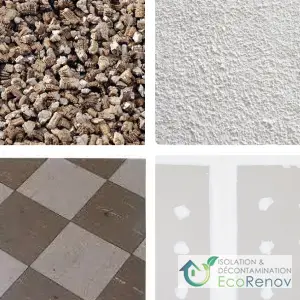
- Plaster and plaster joints: Commonly used in older buildings, these materials could contain asbestos to enhance their strength and durability.
- Cement: Asbestos was often mixed into cement to make it stronger and fire-resistant.
- Stucco: Asbestos is frequently found in stucco, whether in ceilings (commonly known as popcorn ceiling or textured ceilings/walls) or stucco walls.
- Tiles: Asbestos was historically used in old vinyl floor tiles and even in ceiling tiles to increase their durability and resistance to wear.
- Heating systems: It was very common to cover furnaces or other fire-prone heating systems with asbestos. Asbestos sheets and panels were also sometimes installed above furnaces for added fire protection.
- Insulation: Asbestos can be found in some insulation materials, particularly vermiculite. Vermiculite with asbestos was quite popular in the past, especially when sourced from contaminated mines or from companies like Zonolite.
If you discover the presence of asbestos in friable materials or materials you wish to remove, it is important to contact a specialized asbestos removal company by calling 438-800-2046 to ensure the work is carried out safely.
A material containing asbestos does not release fibers as long as it remains in good condition, is not friable, and is not disturbed. It is when this material becomes friable and/or damaged, for example, during residential demolition or renovation work, that asbestos fibers can be released into the air and pose health risks when inhaled.
For this reason, it is essential to contact qualified professionals by calling 438-800-2046 if you have any doubts or if the work involves these materials.
The requirement for asbestos testing before residential renovation or demolition work depends on municipal regulations, which can vary from one city to another. Therefore, it is important to check the requirements with your municipality before starting your project.
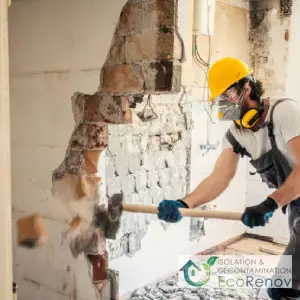
However, if you suspect the presence of asbestos in certain materials, it is prudent to assume they contain asbestos until testing confirms otherwise. This precaution ensures your safety, as well as the safety of your family and workers, by minimizing the risks associated with asbestos fiber exposure when handling or disturbing the affected materials.
A positive asbestos test means that it is crucial to take appropriate measures to ensure the safety of occupants and comply with current regulations. Here are the steps to follow:

- Prioritize the affected areas: Identify the locations and materials containing asbestos that you want to remove first. This step helps evaluate the scope of the work needed and the level of risk involved.
- Obtain a professional estimate: Contact an asbestos removal specialist for an evaluation and a detailed quote by calling 438-800-2046. To speed up the quote process, prepare photos and measurements of the materials you wish to remove. This information allows the evaluators to base their assessment on the volume and friability of the materials.
- Complete asbestos removal before any renovations or selling the property: It is essential to safely remove the asbestos before starting any work or putting your property up for sale. This prevents health risks for occupants and makes the property more appealing to potential buyers.
It is highly recommended to hire professionals to handle or collect materials that may contain asbestos. This precaution ensures your safety, as well as the safety of current occupants, potential future owners, and workers.
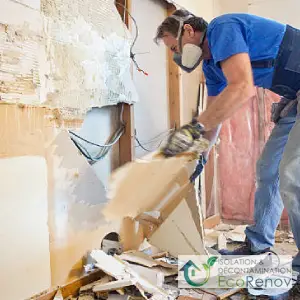
If you collect a sample yourself instead of entrusting this task to a laboratory technician, the test result cannot be certified. Only a laboratory analysis can confirm the presence or absence of asbestos, as it is not detectable by the naked eye. Therefore, it is always advisable to have a laboratory technician collect samples from the material you want to test, ensuring that they can analyze them in the lab and provide you with a certified analysis report.
In the context of a real estate transaction, financial institutions and insurance companies now require a certified asbestos test for collected samples. Additionally, if asbestos removal work is performed, certified post-work asbestos air testing is needed to prove the absence of residual asbestos fibers. A house free of asbestos, along with proof of compliant work, will also be more appealing to potential buyers.
Other Asbestos Testing Services
Related Asbestos Removal Services

Get a Free Estimate for our Asbestos Testing Services

Vermiculite removal and asbestos removal (per region)
Asbestos Removal in Montreal
Asbestos removal, Montreal: houses built before 1985 may have been built with several materials containing asbestos. Vermiculite insulation, popcorn ceiling, drywalls, vinyl tiles, asbestos insulation for pipes are just some of the materials that may contain asbestos. Whether it is for the renovation of your home or as part [...]
Vermiculite Testing
Vermiculite testing allows us to verify if the vermiculite contains asbestos or not. Indeed, if your house was built in the Greater Montreal area before 1985 and if it contains vermiculite, there is a possibility that it was contaminated with asbestos and only the vermiculite testing in a laboratory [...]
Vermiculite Removal
Vermiculite removal in Montreal, Laval & Longueuil: specialists in vermiculite removal and asbestos abatement, we have been offering professional, highly safe vermiculite removal services since our beginnings at the most competitive price in town. Whether you are in a real estate transaction, whether it is in the context of renovating [...]
Asbestos Removal in Laval
Professional in asbestos removal in Laval, the EcoRenov's team offers turnkey services that follow the most rigorous protocols, which are safe, certified, guaranteed for life and always offered at the most competitive price in town. Found in many construction materials in homes built or renovated before 1985, asbestos is [...]
Asbestos Removal in Longueuil
Asbestos removal expert in Longueuil, EcoRenov offers you certified asbestos removal services that comply with the most severe safety measures. Nothing is left to chance during our asbestos abatement projects to ensure the safety of your family and the cleanliness of the premises without breaking your budget. Our asbestos [...]
Vermiculite removal in the attic
Getting an assessment for vermiculite removal and attic decontamination is simple and quick with the expert team at EcoRenov. Whether you're planning renovation work or involved in a real estate transaction, we understand the importance of providing our clients with a fast, accurate, and detailed quote at the most [...]
The cost of vermiculite removal
The removal of vermiculite is an inevitable task to restore the full value of a property in the greater Montreal area, and the first question we are often asked is, "What is the cost of vermiculite removal?" Whether the removal is only in the attic or in other less [...]
Extraction of Asbestos-Free Vermiculite
Asbestos-free vermiculite, although once popular and widely used in the past for attic insulation, now raises many concerns due to its potential asbestos contamination. Back then, vermiculite was highly valued by homeowners for its cost-effectiveness, ease of installation, and the generous federal subsidies provided for roof insulation using vermiculite. [...]
Extraction of Vermiculite with Asbestos
Vermiculite with asbestos was widely popular in the past, particularly due to its ease of installation, cost-effectiveness, and government subsidies that encouraged homeowners to use it as attic insulation. However, subsequent research revealed that vermiculite could contain asbestos, a hazardous substance when disturbed. Asbestos was often mixed with vermiculite [...]


